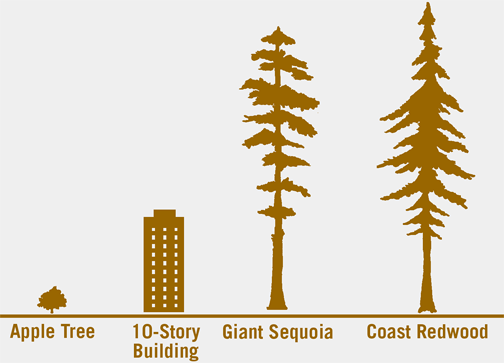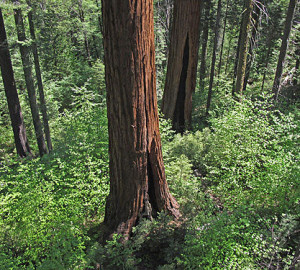Forests That Have Survived for Millions of Years

Redwoods get their common name from their bark and heartwood, the reddish-brown color of which stems from high tannin levels. Other chemicals found in the leaves, branches and bark give these trees a remarkable resistance to fungal disease and insect infestation. Their thick bark holds large quantities of water, which protects them from periodic, naturally occurring fires.
All three redwoods — Coast Redwoods, Giant Sequoias and China’s Dawn Redwoods — are descendants of a group of conifers (cone-bearing trees) that flourished more than 144 million years ago when dinosaurs roamed the Earth. At that time, the Earth’s climate was warmer and more humid than it is today, so redwood species grew throughout North America, Europe and Asia. Over time and in response to an ever-changing environment, they retreated from most of their former range, and many once-abundant redwood species became extinct.
Successive ice ages, including the last one that ended about 10,000 years ago, have restricted the remaining redwood species to three small, distinct regions, each supporting one of the species. Each region is the only place in the world where you will find native populations of that species.
Redwoods Are More than Trees

It’s important to remember that redwoods are not just trees — they are part of complex communities of living things interacting with their environment. These ecosystems depend on redwoods and support these trees. About 82 percent of the remaining ancient coast redwood forests is protected in parks and reserves; more than 90 percent of giant sequoia forests is protected in national parks and forests. Much work remains to ensure that future generations can enjoy these magnificent forests.
There are still ancient redwoods slated for cutting that need to be protected. Redwood lands already protected in state and national parks also face threats such as devastating government budget cuts. These cuts close parks, leaving no personnel to protect the forest from threats such as illegal logging and pollution from marijuana cultivation. Some of these lands are still struggling to recover from years of past damage and neglect.
To thrive, protected forests also depend on the health of nearby land, much of which is privately owned, including by commercial timber companies. Finally, we do not yet know the impact that the Earth’s changing climate will have on the size, strength and survival of redwood trees and forests. Save the Redwoods League is leading an effort to study redwoods and climate change.
With all these challenges before us, we are at risk of losing these magical places forever.
You Can Help
Today, it takes a community including private landowners, parks, local communities, scientists and our supporters, to safeguard redwood forests. Together, we protect redwood forests from threats such as unsustainable development; restore the forests we have lost; and connect people to these towering wonders of nature. With your help, we can leave the forests — and the world — in a better place than we found them.